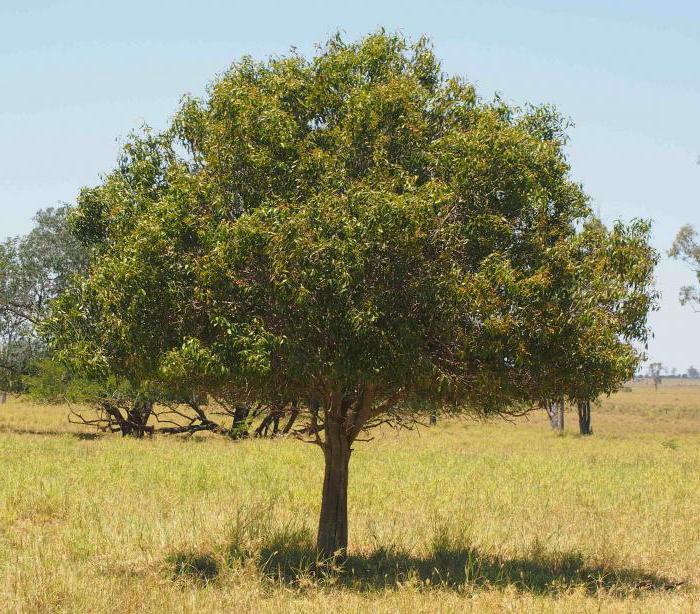Of more than 50 species of trees and shrubs of the genus Loch, only one grows on the territory of Russia - narrow-leaved. Its garden form is also known as the jeda tree of Bukhara. Ornamental deciduous plant with tasty and juicy fruits is thermophilic and can not be grown everywhere.
Narrow-leaved goof: description
The plant is a bush or a small tree (3–7 m), sometimes with thorns. For young shoots, a silver-steel color is characteristic, for adults it is gray. Leaves of elegant lanceolate-oblong shape with petioles, 5–8 cm long. They have a decorative appearance: the upper part is gray-green, the lower part is silver-white. In spring, the tree is covered with many small axillary flowers that exude a pleasant and rich aroma. Beautiful foliage, the shape of the crown and the fruits are what this tree is grown in gardens for . Jida berries form in August-October. In shape, they vaguely resemble sea buckthorn, but are more elongated and painted in a rich brown color. Especially fruits are popular in the east as a seasoning for a wide variety of dishes. They contain more than 40% sugar, including glucose, sucrose and fructose. In addition, there are minerals, organic acids, phosphorus, etc.
Places of growth
All trees and shrubs from the genus Loch are thermophilic plants. The range of their growth is quite wide: Eastern Europe, Asia, Iran. In Russia, they can be found in the Caucasus, in the Altai Territory. The jeda tree feels most comfortable in a desert climate, near the banks of rivers and lakes. In its natural habitat, it forms dense thickets. The plant is completely unpretentious to the soil, resistant to the effects of drought and hot winds. It transfers saline soil, with abundant falling asleep with sand, it begins to form additional additional roots.
The tree is great for growing in culture. Resistant to gassed air, dust, soot, it takes root not only in gardens, but also in city parks. You can create a hedge from it, as it is easy to prune, it begins to bear fruit and bloom early (from the 3-5th year of planting). The developed strong root system allows you to use the tree of jeda as a waterproofing soil-strengthening plant.
Seat selection and landing
The most common Bukhara jida in the gardens. The tree is unpretentious, drought tolerant and photophilous, it is an excellent honey plant. Choose sunny areas for him. The plant is undemanding to soils, it has the ability to fix atmospheric nitrogen like leguminous plants. There are special nodule bacteria on the roots . In this regard, it develops well even on the poorest soils and in ecologically unfavorable areas. However, for a decorative look, lush flowering and good fruiting, it is best to "pamper" the tree. Jida is responsive to well-drained soils with a high content of limestone, acid soil must be liming a year before the intended planting.

The survival rate of seedlings largely depends on the quality of the material for planting. It should be remembered when buying a plant that with a trunk diameter of 5-8 mm in height, it should be 30-50 cm, with strong, not dry roots. A landing pit is prepared with a depth of about 50-60 cm and twice as wide. Drainage is poured on the bottom (pebbles, stones, expanded clay, etc.), then it is covered with prepared fertile soil. When planting a tree, the root neck must be deepened by 3-5 cm. In order to protect the roots from overheating, excessive weed growth, rapid evaporation of moisture, the circulatory circle is mulched with wood chips, sawdust, etc.
Jeda tree: how to grow on a garden plot?
Planting a tree is only the beginning. Further, it requires close attention and care - simple, but constant.
A year later, for the young plant, the first early spring feeding should be carried out. For this, a nutritious mixture of wood ash (100–150 g), compost (8–10 kg) and superphosphate (30 g) is used. In mid-summer, when the plant already forms fruits, it is necessary to water it with mullein infusion.
Loosening the soil is carried out shallow so as not to damage the root system close to the surface. Despite the fact that the jeda tree, the photo of which is presented in the article, tolerates drought quite calmly, it still needs abundant watering if there is prolonged hot weather. Water consumption is 30–40 liters per 1 sq. Km. m
Trimming until the age of ten requires only sanitary, and only then rejuvenating. In the first years of growth, the tree should be covered in the winter, in the following - only lightly sprinkle with sawdust or pine needles to a height of 10 cm.